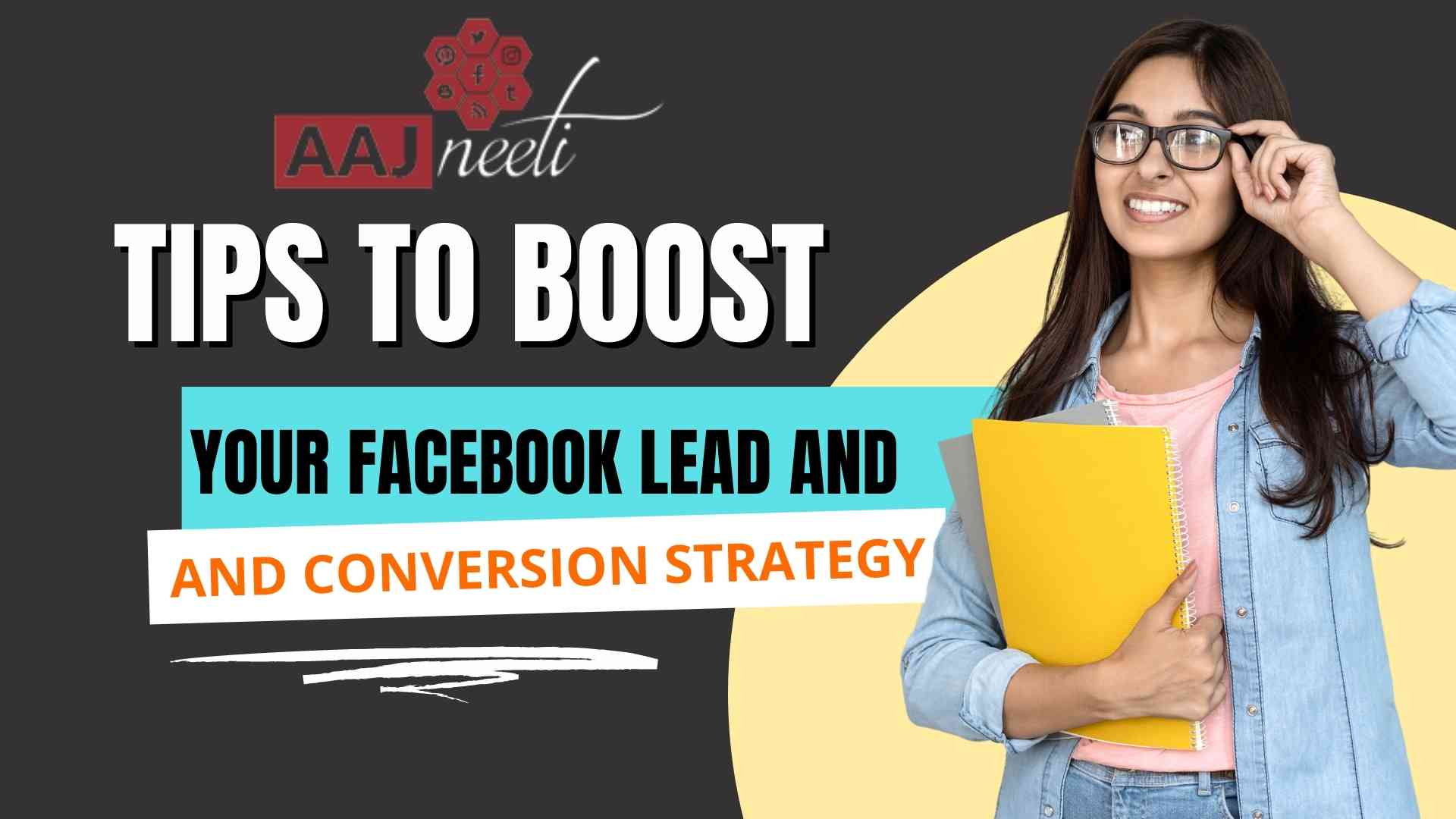Remarketing & Retargeting can be a little confusing as often people mess up these terms interchangeably. Think of a scenario where a customer enters your shop, inquires about a particular product, and then leave without buying. You know well that there has been a potential sale. But, there is a complete chance that the customer will purchase a similar product very soon.
How will you proceed to follow that visitor reminding them of your services wherever they go? Reminding them to the extent that your name is the first name to come to their mind while purchasing. This sounds like an insane idea in the real world. Even if someone does not penalize you up for stalking, the cost alone would make it impossible to pull off.
Remarketing is a great choice for many reasons. Some of the examples are:
- Reduced cost per impression
- Better conversion rates
- Improved Return on Investment
- Precise targeting
- Cost-effective branding
There is no wonder that remarketing has been taking the digital world by storm. It seems difficult and hard to set up but it is not. Telling the truth, setting up a killer remarketing campaign is surprisingly easy. These platforms take proper care of all the technicality, like leaving a cookie to earmark visitors, monitoring their behavior, etc. This helps you to give more time to your strategy and branding while they handle all the technicals.
The conflict of Remarketing & Retargeting is ages old. People use these terms interchangeably these days but technically these are not. Remarketing & Retargeting have similar goals but there are also some important differences that we must understand to dive in deeper.
What differentiates Remarketing & Retargeting?
Advertising managers spend a lot of time getting creative, testing the audience, and obsessing over numbers. It can be a lengthy process with only a small percentage of advertisement clickers actually converting successfully. While you might be getting a lot of fresh incoming traffic, you might not see those stats translate to sales.
A few become a sale on the first landing on your website. In the age of being able to track everything, it can be easy to get distracted. You might even forget the true role of marketing.
This is important to win customers over before they make a decision to choose your product or service, over others. Often, the best customers to target are those who have visited your website more than once. These customers might have already digitally interacted with your brand in the past.
Remarketing & Retargeting both provide an opportunity to reach these people and they are the ones more likely to purchase. This can be an extremely crucial strategy in your marketing efforts. Now let us take some time to understand Remarketing & Retargeting individually so that the differences become clear to you.
What is Retargeting?
Retargeting fundamentally can have multiple approaches. It most often refers to online advertisement targeting users who have interacted with your site in specific ways without purchasing. Let us say that a customer enters your website, and clicks on a product or takes a certain action. This will prompt you to set a cookie in their browser. You can then use the information to retarget them with advertisements based on their interactions once they leave your website.
If you have ever visited a website and later saw an advertisement from the brand, you have experienced retargeting. The brands display these advertisements on Facebook’s feed, Instagram’s feed, or some other website. Retargeting works by adding a pixel to a business’ website.
This pixel captures the data about the users who visit the website and what they do while they are online. The data is useful in creating an audience based on those interactions. You can thus target these audiences through Google display or social media advertisements. Let us see an example to understand it in a better way:
Example
- A website which is selling shoes adds a Google and Facebook pixel to their website.
- Users visit the brand’s ‘New Apparel’ page.
- The same users leave without taking any action (here, making a purchase).
- While browsing other websites, these users see retargeting advertisements featuring new apparel.
- The brand might also create a Google display advertisement with a coupon for the new apparel. The brand only shows the advertisement to the people who visited the New Apparel page on their website.
According to a study, only 2% of the website visitors convert during their first visit to a website. Retargeting enables advertisers to drive the audience back to a website so that they are more likely to convert.
The third-party platforms such as Google Display Network or Facebook place these advertisements. They allow your advertisements to trigger in other websites that your visitors go to. Ultimately, you can categorize retargeting into on-site and off-site events. Each one has different strategies you can take depending on the kind of interactions you want to target. Let us look more precisely into these.
Targeting On-Site Interactions
This is the category that people often associate with retargeting. This involves targeting individuals who have already visited your website. They have interacted with your products and services before, or taken some action but did not purchase. Retargeting to those who have had on-site interaction increases conversions.
They can also help retain those who have already expressed an interest in your brand. There are a bunch of ways to retarget to them, some of which are the following:
- Target based on a product that they interacted with but did not buy.
- A target based on how they found your web site (social media, web search, or other inbound events)
- Target on your email list who expressed an interest in your brand, but have not converted yet to a sale.
You can set these parameters within different platforms like Google Ads, Google Analytics, Facebook Ads, etc. Retargeting campaigns almost always show higher engagements and conversions than non-retargeting campaigns. This brings back the fact is a lot easier to market to those who have expressed an interest in you.
Targeting Off-Site Interactions
Retargeting once used to have limitations to on-website behavior. This has changed though as more users spent time on social media. The limitations of the delivery of product and brand information have spread its feet. It has started to disseminate across other areas. This means audience interactions now exist in several places that the brand did not own anymore. Social media giants such as Facebook recognized this and started to make engagement targeting a possibility.
In other words, brands could now make retargeting pushes based on what a user did on the platform. This is related to their pages, events, and other items Facebook controls that a brand participates in.
Retargeting now includes users who interacted with your page and other similar options. In common practice, targeting these users was still retargeting. This then became the brave new world of Off-Site interaction targeting.
Behavioral retargeting
If you have been hearing about behavioral retargeting, it is actually another term for describing retargeting. Behavioral retargeting is when you target online customers based on their past behavior online. This includes, which webpages they visited, how long they spent on each webpage, and which links they clicked on.
Retargeting is almost the same. It involves remarketing to people who have visited a certain page or clicked a certain link. Today digital marketing and remarketing are all about the customer’s interests or behavior. These are the best ways for marketers to determine what their customers are looking for and capture their mindshare.
What is Remarketing?
This is the point where it gets a little confusing and there is some overlap in the industry. Sometimes companies refer retargeting to remarketing, such as Google’s Remarketing tools are all retargeting tools in a classic sense. While this may be a little confusing, but you must remember that remarketing and retargeting do share goals. The terminology is not that important as the associated strategy.
Remarketing is more often about re-engaging customers via emails. While retargeting is more about moving not-yet customers down to the purchase path. Things like mailing a customer to renew a service or upsell an accessory are traditional examples of remarketing. It can also take the form of reminding a user to act, using the information about their purchase history. This frequently happens in email marketing campaigns but also takes the form of paid advertisements targeted toward current customer buckets.
How does Remarketing work?
It is not that difficult to set up a retargeting campaign for your website. When you create a campaign with a particular advertisement network, the network will provide you with a pixel. A pixel is a small piece of code to add to your website. Each time a new customer visits your website, the code will drop an anonymous cookie in their browser.
This will add the user to your retargeting list. When the user visits another website that hosts advertisements from your advertising network provider, the system will show advertisements. This will keep occurring as long as you have an active campaign running for your account.
What are remarketing pixel tags?
Pixel tags are small pieces of code on a webpage. They enable websites to place a cookie on a users’ browser. Cookies are the crumbs that website visitors leave behind. Each user has a unique yet anonymous identity so you can track their website activity using these trails of cookies.
In remarketing, the advertisement server can access the visitor’s identity and save it to the relevant remarketing lists. Every time you start working with a new advertising network, begin with adding their pixel and start population audience lists.
Examples of remarketing
Let us see a financial example. Rohan visits the Amazon.in website, looks at particular headphones but does not purchase them. Then Rohan visits some other websites such as social media, entertainment, etc. Amazon.in is running a remarketing campaign via an advertising network that works with this site he visited latter. Rohan sees an advertisement by Amazon.in featuring similar headphones to those he was looking at the other day.
The aim of the retargeting advertisement is to remind Rohan of those headphones he had an interest in. This might be a possibility that by seeing the advertisement, Amazon.in will convince her to purchase.
Remarketing costs
Remarketing is a cost-efficient and effective way to attract customers. This is mainly due to the fact that you are targeting the users who already have an interest in you. With the right budgeting and targeting, you can achieve good results with your Key Performance Indicators.
What is a remarketing list?
A remarketing list is a list of website visitors who perform a certain action on your website. For example, a Homepage remarketing list comprises all the visitors to your Homepage over a specified period range. As the visitor lands on your Homepage, the system adds their cookie to your remarketing list.
Now you can remarket only to the list of people who visited your Homepage. You can create all sorts of remarketing lists, and tailor your advertisement messages to each list.
Benefits of remarketing
It is undeniable that Remarketing has a lot of benefits over its Rival services. Some of them are the following:
- Capitalizing on the lost website traffic.
- Targeting the people who have already visited your website and shown interest in your offerings.
- Keeping your brand at the top of mind by strategically showing advertisements to interested audiences.
- Targeting audiences who are more likely to convert.
- Affordable marketing tactic available on a range of platforms and channels.
- Suitable for every industry and vertical.
Your website might be attracting lots of traffic. But, the actual fact is that the average conversion rate for the first time visitors is low. According to research on e-commerce websites, the conversion rate is just 1.6%. This means that although you are getting the traffic, you are not getting successful sales. Remarketing is your best option to capitalize on all that lost traffic.
Targeting the people who have already shown an interest in your brand is one of the most effective ways. This helps to remind them to come back to your website. You can use retargeting in all verticals and industries, though it is obviously an important tactic in eCommerce.
You can use retargeting advertisements to offer special deals that were not available on the first visit to your website. This can include a discount coupon, buy one get another free, or some other offer to entice a customer.
Why should you use remarketing?
‘When to retarget?’ is a great question to ask for and a quite tricky one. Some marketers use the always-on tactic. This means that they constantly run a remarketing campaign for all users who visit their website but do not convert.
However, many marketers opt for a more advanced and personalized approach to remarketing. You can focus on your remarketing campaign campaigns according to predefined criteria.
You might want to run a remarketing campaign only for specific visitors. This can include users who land on specific pages, to users who visit your website at a certain time. This will really depend on your overall strategy and what you have got going on at a given time.
With remarketing it is really important to about an overkill. You do not want to risk annoying potential customers by showing them too many advertisements. You must put a cap on how many advertisements can be seen by each user. Choose no more than two to three advertisements per day.
Remarketing is essential in modern marketing
As more and more of our lives proceed online, remarketing will become increasingly necessary. If your brand is not utilizing this strategy, it is losing customer engagement to the competitor brands.
Remarketing is ideal for following up with the customers online because there are a few options otherwise. Mailing lists and social media are important but also require action from the reader. Remarketing is more autonomous and less invasive. It helps spread brand awareness and contributes to a successful purchasing experience.
Without remarketing, customers who visit your website may never find their way back. Think of remarketing as a lighthouse in a storm of genuine information. Turn on your light and the audience will come to you.
Where can you remarket to your customers?
There are a number of different platforms and channels that you can use to remarket to your customers. Some of these are:
- Simple Display remarketing is the most simple and popular type of remarketing. Simply display and advertisement to people on other websites after they visited yours, on display ad networks such as Google.
- Native remarketing allows marketers to re-engage their visitors with valuable content recommended across premium publishers in native advertisement placements.
- Search remarketing (RLSA) is a feature that lets you customize your search advertisements campaign who have previously visited your website.
- Social media remarketing shows your advertisements to people on social media platforms like Facebook, LinkedIn, and Twitter.
Remarketing is a great way yo increase your Return on Investment in your advertisement spend. Let us say, you have a limited budget, or you feel you have paid enough for that first click. You can experiment and finetune your approach for retargeting purposes.
Dig into your data and find out which OS, devices, and even geo-locations bring you the highest conversion rates. Create remarketing campaigns according to these segments and observe how they perform. You might well be able to reduce your costs and increase your conversion rates at the same time.
Remarketing is a B2B space
B2B marketers face a unique challenge in the part where they have not defined their audiences properly. Job titles vary from business to business and in small companies, buyers often wear multiple hats. Business buyers are much easier than their consumer counterparts. An executive with a full schedule may not have time to read ebooks. He might not even spend time engaging in conversations with brands on social media.
To reach a business-minded audience, marketers need a deep understanding of the challenges their target readers face daily. Therefore, their produced content needs to provide real value and their remarketing efforts need to be integrated with other strategies.
A B2B strategy using white papers or eBooks draws in interested readers. These include the people who are looking to learn about a specific business topic or challenge. These assets not only draw in the readers who are searching for relevant keywords but also qualify leads. A lead who has read a white paper on a specific topic has more knowledge on the subject. This allows him to make the sales call easier and more productive.
An integrated approach to marketing utilizes CTAs, mailing lists, and other techniques. This helps to keep leads interested and moving along the sales funnel. Remarketing supports these efforts by adding another touchpoint that is minimally intrusive than the others.
Business leads may have different priorities than consumer leads. But eventually, all those consume the content online. Therefore, remarketing is still an effective strategy in the B2B aura. The important thing is that each point transmits a consistent brand message to the users.
The Haze between Remarketing & Retargeting
These two tactics existed in silos. The email had its own boundaries, and paid-media had limitations to the top of funnel targeting. Remarketing was based on website actions.
However, Remarketing & Retargeting have become interchangeable in recent years. Platforms like Google Ads and Facebook added the capability to target on platform using email customer lists years ago. The email no longer exists as a separate silo of information from the paid-media part of the world.
When you upload an email list, the platform will then work to match those email addresses with user logins. You can use this list to show advertisements assuming that it meets the minimum threshold of audience size. Now, you have that haze of targeting your email users, perhaps with the same message, you are sending in emails.
Remarketing & Retargeting: Focussed areas
When comparing Remarketing & Retargeting, the overlap and differences have become less clear over the years. But in general, this has also been true for digital marketing. Their shared goal though is to increase conversions to those most likely to buy from your brand. The major difference really is strategy association.
Retargeting has a focus on paid advertisements and can take a variety of forms and target a broad audience. Remarketing has a focus on email campaigns and reaching out to people who have already interacted with you. This allows for more specific upselling and messaging. This meeting of Remarketing & Retargeting is really indicative of what we see in digital marketing as a whole.
Attribution is an unclear thing
It once felt like it was not a clear thing. But, it was mostly due to platforms not integrating all the elements marketers had access to. These platforms continue to cross-reference on another. The questions thus become less about what defines a tactic and more about which blend yields the best results.
How do Remarketing & Retargeting fit into a broader marketing strategy?
Although display advertisements are the bread and butter of retargeting, remarketing encapsulates a much broader realm of tactics. Some examples of effective remarketing techniques include email lists, add-on products, personalized suggestions, and incentives.
In today’s overcrowded digital marketing world, brands can not afford to rely on just one marketing strategy. Taking an integrated approach increases the reach of your advertisements campaigns and reduces the risk of low engagements.
Combined with other marketing strategies, such as content marketing and social media outreach, these initiatives form a solid foundation. From these, a brand can capture, qualify, and convert leads. In a sales funnel Remarketing & Retargeting tend to fall somewhere in the middle, though their reach can extend to consumers. That too at any stage of the buying process.
Remarketing & Retargeting support engagement
Remarketing techniques fit well with a content marketing strategy. They all contribute to the user’s journey through the sales funnel. The content draws in readers through organic channels. The dynamic remarketing tactics convert customers that have shown interest in specific offerings. Altogether, these strategies promote brand awareness, offer value to consumers, and support sales efforts.
More importantly, remarketing supports integrated communications. It is the idea that all messaging from a specific brand should be consistent and cohesive. Brands demonstrating the consistency of messaging wherever they are present online are more likely to appeal to customers.
A user reads a post on a brand’s website and later views an advertisement for the same brand. Remarketing tools ensure that the experience of the users inconsistent throughout their session. When you align messaging with brand values and consumer expectations, everyone wins their part.
What’s better?
Both Remarketing & Retargeting have the same goals as we have clearly seen in this article. The basic difference lies in the marketing strategies they use to re-engage their audiences. Retargeting uses advertisements to reach out to the people who visit your website or social profiles. Remarketing uses customer emails to reach current or past customers. It depends completely on the types of marketing segmentation you are using and the goals you have.
You should try retargeting if you:
- want to focus on attracting new customers.
- are driving a lot of site traffic but not triggering conversions.
- do not have an email list of the interested prospects.
You should try remarketing if you:
- want to focus on re-engaging or past customers.
- do not have a budget for the advertisements.
- already have an engaged email list.
At the end of the day, when it comes to Remarketing & Retargeting you do not have to choose. You can use both Remarketing & Retargeting at the same time to maximize your results and drive even more interesting prospects.
When to use which?
Now you know the difference between Remarketing & Retargeting. So, let us start talking about when it is most effective to use each of these tactics. Though the goal of both Remarketing & Retargeting is the same. A goal to influence more conversions from those who have shown interest or are likely to purchase from your company. You can use different strategies to achieve this goal.
Since remarketing focuses more on email campaigns, this approach is best when the email is the medium of your conversation. Retargeting advertisements have limitations when it comes to the amount of content you can deliver in the advertisements. But, emails offer a bit more space. This makes remarketing ideal when you want to remind the user of what they left behind. Also, it is applicable when you want to upsell, cross-sell, or add an additional promotion to the offer.
Let us say that you want to add a bit more flexibility in the location of the content. Or you want to target a broader range of consumers. Then, retargeting advertisements may be the ideal way to engage customers who are more likely to be interested in you. It is very important to note that remarketing only allows you to reach previous website visitors. However, retargeting advertisements can help get your brand in front of new audiences by reaching particular audiences. These include those who have taken actions online that are similar to your current customers.
No one size fits all solution
When it comes to Remarketing & Retargeting, then you must remember that one tactic is always better than the other. Both approaches to reach out to the site visitors help in increasing conversions. That is why it is recommendable that businesses consider each tactic carefully. Also, they must make both a part of their integrated digital marketing strategy.
It is vital to know the differences between Remarketing & Retargeting. This becomes important when you want to get the most out of your digital marketing strategy. Both Remarketing & Retargeting are great tactics for re-engaging those who have shown interest in your website, brand, product, or services. You must know the correct time and place to use each for optimal results.
Conclusion
The reason why your website visitors did not convert is something you can never really know for sure. Maybe they became distracted with something and simply left, or maybe they did not like your offer. Maybe your offer was outside of their budget or they were just browsing but plan to buy in the future.
Remarketing & Retargeting are great ways to keep your business or brand at the front of their minds. Keep reminding them and give them reasons to come back. Eventually, they might and you will be on your way to generating more leads, conversions, and sales for your business.
Do you wish to learn more about Remarketing & Retargeting? We also have articles about Google Ads remarketing, Google Ads retargeting, Facebook remarketing, and Facebook retargeting.



















